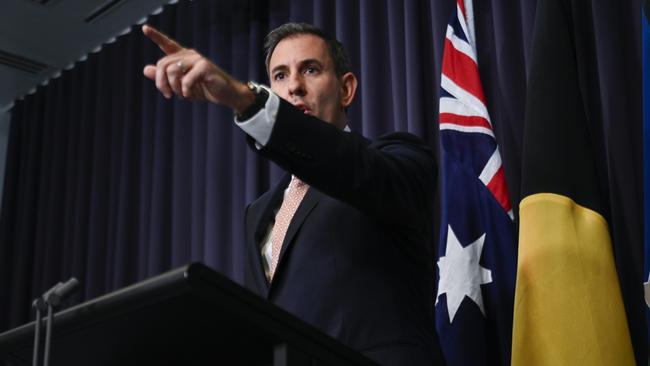Super tax reality: Data shows Gillard-era wealth tax caught many more investors than forecast
ATO data proves beyond doubt how the proposed new super tax will quickly capture hundreds of thousands of extra investors.

New tax data proves beyond doubt how the proposed new super tax will quickly capture hundreds of thousands of extra investors. Australia’s first wealth tax on super, introduced by the Gillard government, has already roped in more than four times as many investors than originally forecast.
The Chartered Accountants ANZ group has run the numbers on Gillard’s “high income super contributions tax”, which was introduced in 2012 without inflation indexing.
At that time, the Gillard ALP government said the tax would capture 123,000 high-income investors. Today, the tax captures more than half a million people, with the numbers expanding faster each year as salaries and inflation increase.
Tony Negline, superannuation leader at Chartered Accountants ANZ, says: “The earlier tax is a proxy for how the new super tax will play out, except the new tax will be a supercharged version of what the government started in 2012. That’s because the new tax captures upward movements in both income and asset values. What’s more, in the case of the new tax you are talking about the capture of unrealised gains.”
The historic data collected from the high income super contributions tax presents a powerful argument for indexing Jim Chalmers’ new super tax, because rather than making forecasts or modelling the possibilities, the numbers are based on hard evidence from the ATO.
Data spanning 2012 until 2022 (the last full-year figures offered by the ATO) shows how a tax that was originally restricted to high earners – $250,000 was a very high salary more than decade ago – has increased dramatically.
In the last year for which records are available, the high income contributions tax managed to drag more than 58,000 super savers into the tax net inside just 12 months.
Even using a rock-bottom assumption that the same amount fell into the high income super contributions tax net over the last two years, the total number of taxpayers now included hovers around 500,000, with more falling into the trap – due to the lack of indexation – every year.
Some of the most influential figures in finance, including the former RBA governor Philip Lowe and ex-Treasury secretary Ken Henry, have come out against the Albanese government’s new super tax due to come into effect on July 1. The outstanding objections are that it is based on unrealised gains (or paper gains) and that it is not indexed for inflation.
The government has said only about 80,000 very wealthy super savers will be affected by the new super tax, known as Division 296.
But among the most powerful voices protesting over the terms of the new tax have been the industry fund leaders with three of the biggest funds: AustralianSuper, ART and Aware Super.
As The Australian reported: “Young workers, with modest super balances, are set to be swept up in the changes that are targeted at super members with balances in excess of $3m. Eventually younger workers will be hit by any tax that is not inflation indexed, but also about 60 per cent of younger workers default into big funds. And though they will have balances well under $3m, they are still going to be hit with the same tax level of tax enjoyed by wealthy older members who have accumulated large sums over a lifetime.”
Separately, in a special edition of The Australian’s Money Puzzle podcast this week, Hugh Robertson of the Centaur group, a Barron’s Top 150 financial adviser, says: “ A tax on unrealised gains is a violation of the basic principles of tax.”
Put simply, unindexed super taxes are stealth taxes – they are the superannuation version of bracket creep.
The high income super contribution tax was introduced at a $300,000 threshold in 2012. The threshold was later reduced to $250,000 by the Morrison government in 2017. The tax is charged if your income plus you concessional (pre-tax) super contributions are above $250,000. The tax is an extra 15 per cent. Those in the tax net receive a bill that must be paid either from the individual’s super fund or from private funds. In this respect it is identical to Chalmers’ plan for the new super tax, where individuals hit will be asked to pay their annual bills upfront.
Wealthier investors, farmers and small business owners led the original charge against the new super tax, which imposes an additional 15 per cent impost on earnings from amounts in super above $3m – taking it to a headline rate 30 per cent. For the re-elected government and Chalmers, the legislative obstacles to the tax are now minimal. Ironically, the key parliamentary opposition will be the Greens, who support the tax but want the threshold reduced from $3m to $2m.
Inside the wealth management system, financial advisers are struggling to deal with anticipation surrounding the tax, where a staggering number of questions remain unanswered, especially the treatment of the tax in relation to defined benefit pensions (which have no underlying assets, so in theory the $3m threshold is not relevant).
“It is not that the tax and the collection of the tax will be difficult, it will be a nightmare,” says a leading adviser, who says some money is already flowing out of superannuation but largely due to misunderstanding of the how the tax will work and who it will affect.
One of the most popular alternatives emerging for investors seeking a tax shelter for long-term investments are investment bonds (also known as insurance and education bonds).
James Kirby hosts the twice-weekly Money Puzzle podcast






To join the conversation, please log in. Don't have an account? Register
Join the conversation, you are commenting as Logout